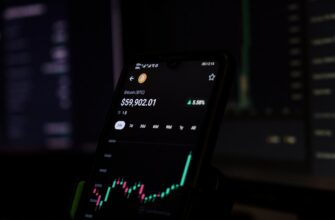- What is Crypto MFT? Unpacking the Mainframe Token Legacy
- From MFT to HIFI: The Pivot to Decentralized Finance
- How Hifi Finance Works: Fixed-Rate Lending Simplified
- 4 Key Advantages of Hifi Finance (Formerly MFT)
- How to Acquire HIFI Tokens in 2024
- The Future of Hifi Finance: Roadmap and Predictions
- Frequently Asked Questions (FAQ)
- Conclusion: Embracing Crypto MFT’s Evolution
What is Crypto MFT? Unpacking the Mainframe Token Legacy
In cryptocurrency discussions, “crypto MFT” refers to the Mainframe Token (MFT), an Ethereum-based utility token originally powering the Mainframe network—a decentralized platform for secure, censorship-resistant communication and data transfer. Launched in 2018, Mainframe aimed to revolutionize web3 infrastructure with encrypted messaging, file sharing, and decentralized applications (dApps). MFT tokens facilitated network operations, incentivizing node operators for relaying data and enabling users to pay for services. Though the project has since rebranded to Hifi Finance (HIFI), understanding MFT’s origins remains crucial for navigating its evolution.
From MFT to HIFI: The Pivot to Decentralized Finance
In 2021, Mainframe shifted focus from decentralized communication to DeFi, rebranding as Hifi Finance. This strategic pivot involved:
- Token Migration: MFT tokens were swapped for HIFI at a 1:100 ratio (1 HIFI = 100 MFT).
- New Vision: Transitioning into a lending protocol offering fixed-rate crypto loans.
- Enhanced Utility: HIFI tokens now govern the protocol via staking and voting.
This shift capitalized on DeFi’s growth while retaining Mainframe’s core ethos of decentralization.
How Hifi Finance Works: Fixed-Rate Lending Simplified
Hifi Finance tackles volatility in DeFi lending by enabling fixed-rate borrowing. Key mechanics include:
- hTokens: Collateralized debt positions (e.g., hETH) representing fixed-rate loans.
- Bond Pricing: Loans trade as bonds, with prices fluctuating based on market demand.
- Liquidity Pools: Users earn yields by supplying assets to Hifi’s lending markets.
Example: Borrowers lock ETH as collateral to mint hETH, repaying the loan plus fixed interest at maturity.
4 Key Advantages of Hifi Finance (Formerly MFT)
- Interest Rate Certainty: Hedge against variable APYs common in protocols like Aave.
- Capital Efficiency: Use collateral across multiple DeFi platforms simultaneously.
- Governance Rights: HIFI stakers vote on protocol upgrades and treasury management.
- Audit Security: Smart contracts verified by Trail of Bits and Quantstamp.
How to Acquire HIFI Tokens in 2024
Since MFT is obsolete, follow these steps to buy HIFI:
- Sign up for a crypto exchange (e.g., Coinbase, Binance).
- Deposit USD, BTC, or ETH.
- Trade for HIFI tokens (ticker: HIFI).
- Withdraw to a self-custody wallet like MetaMask for staking.
Note: Always verify contract addresses to avoid scams.
The Future of Hifi Finance: Roadmap and Predictions
Hifi’s trajectory focuses on:
- Cross-chain expansion (e.g., Polygon, Solana integration).
- Institutional-grade lending products.
- Enhanced tokenomics to boost HIFI scarcity.
Analysts project growth as fixed-rate loans gain traction amid crypto market maturity.
Frequently Asked Questions (FAQ)
Q: Is MFT crypto still available?
A: No. MFT tokens were fully migrated to HIFI in 2021. Trading MFT is unsupported.
Q: What’s the difference between MFT and HIFI?
A: MFT powered Mainframe’s communication network; HIFI governs Hifi Finance’s DeFi lending ecosystem with expanded utility.
Q: Where can I stake HIFI tokens?
A: Use Hifi’s official dApp to stake HIFI for governance rights and rewards.
Q: Was MFT a good investment?
A: Historical MFT prices peaked at $0.092 in 2018. Post-migration, HIFI’s value hinges on Hifi Finance’s adoption.
Q: Can I swap old MFT tokens now?
A: The migration window is closed. Contact Hifi’s support if holding unconverted MFT.
Conclusion: Embracing Crypto MFT’s Evolution
While “crypto MFT” originated as Mainframe’s pioneering token, its rebirth as Hifi Finance marks a strategic leap into DeFi innovation. By mastering fixed-rate lending mechanics and prioritizing user governance, HIFI carries forward Mainframe’s decentralized vision. As the protocol expands, HIFI offers a compelling case for investors seeking stability in crypto’s volatile landscape.








